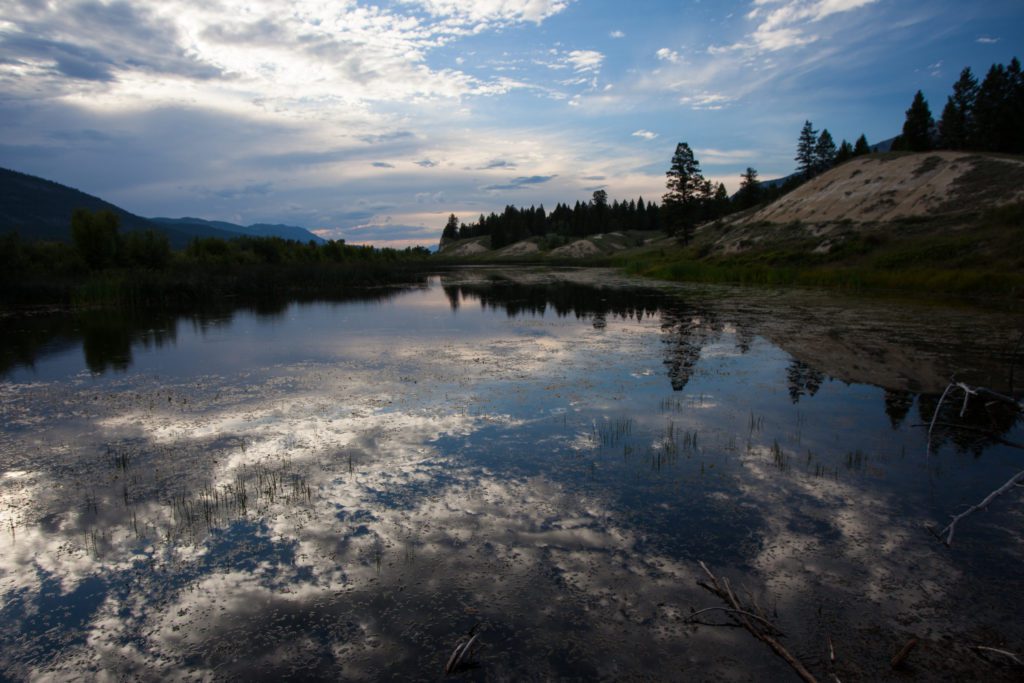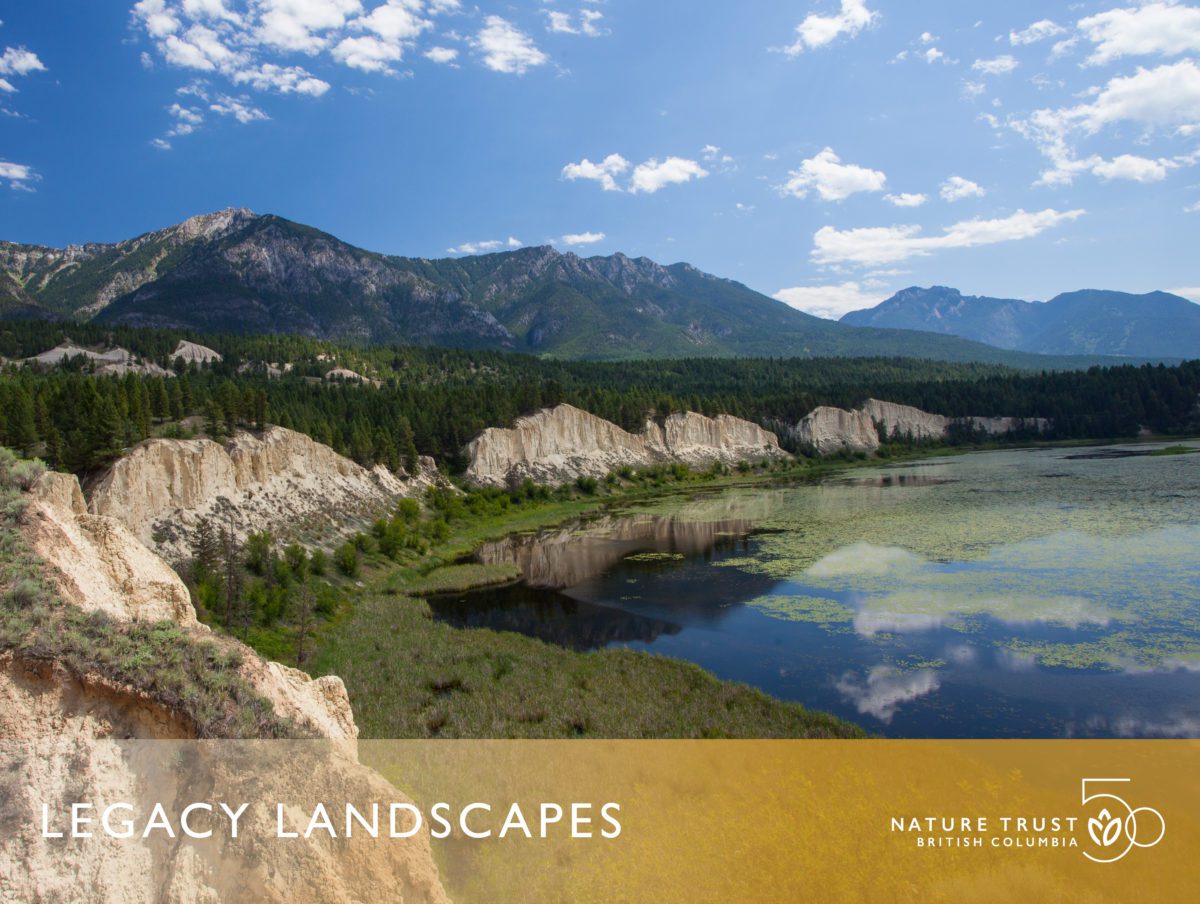
Let us walk you through the rich mosaic of habitats that is Columbia River Edgewater. We begin in the upper bench terrain, steep clay cliffs of exposed rock combined with rolling hills of open upland forest.
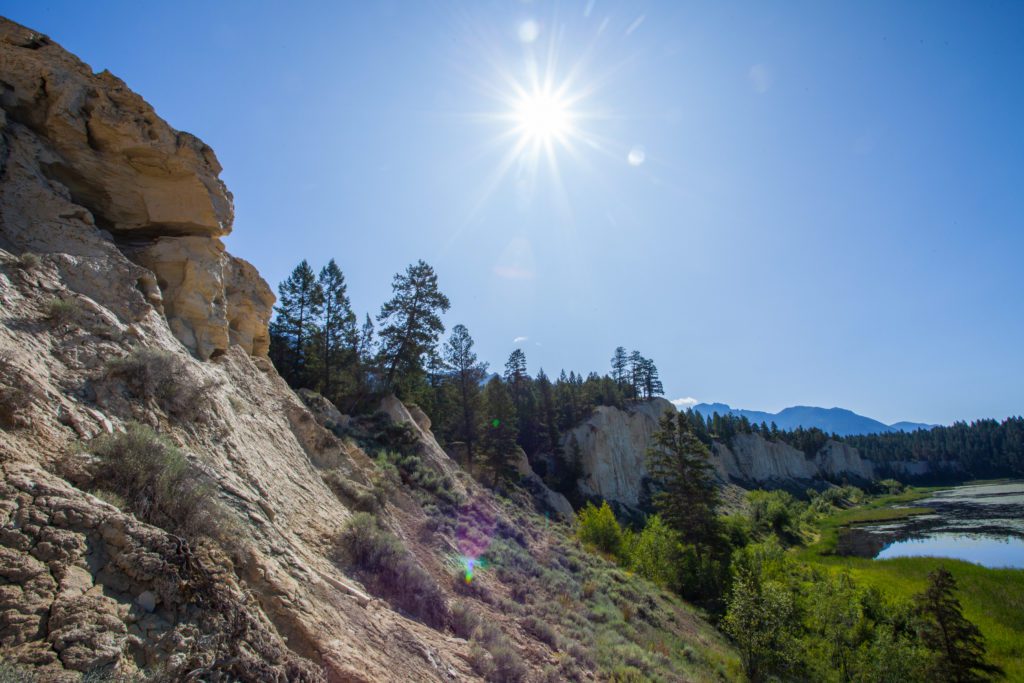
Mighty evergreen Douglas-firs dominate the forest, thin trembling aspens and Engelmann spruces dispersed in between. As the landscape flattens, you are awed by the sight of two great moose ahead in the trees. You admire them quietly before moving on to leave them in peace.

Out of the trees and into a bright green grassland, an American badger curiously nosing through the stalks around you. Continue into the wetlands, full of riparian vegetation that thrives in the frequent flooding of this area.
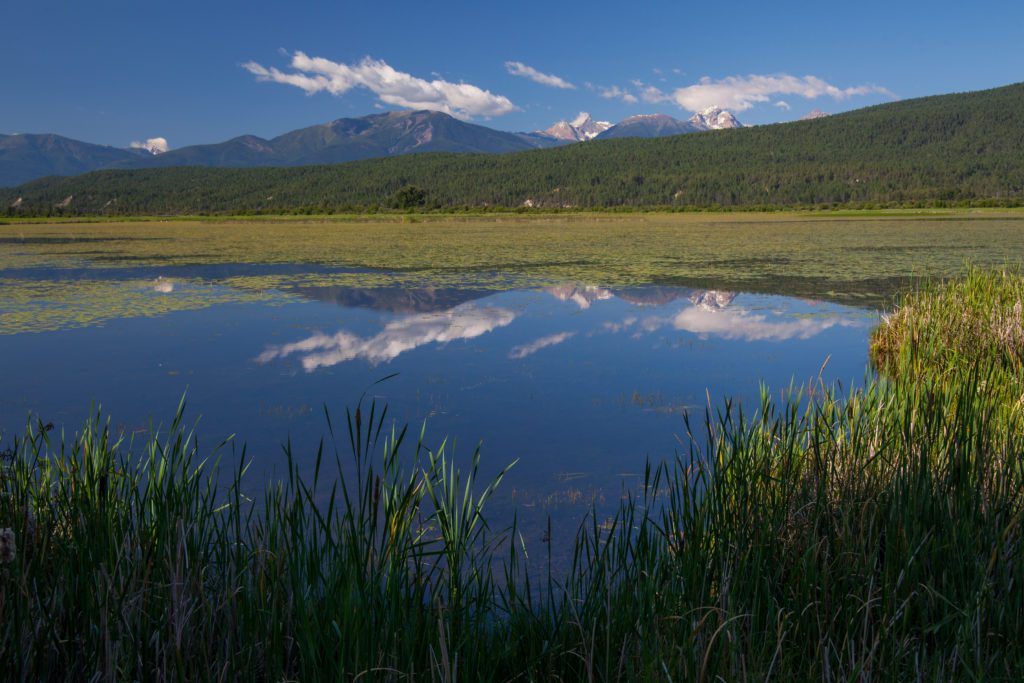
Finally come to the edge of the water. Birds of many species swoop high and low over its surface, and the water reflects the stunning and diverse landscape that stretches all around you.
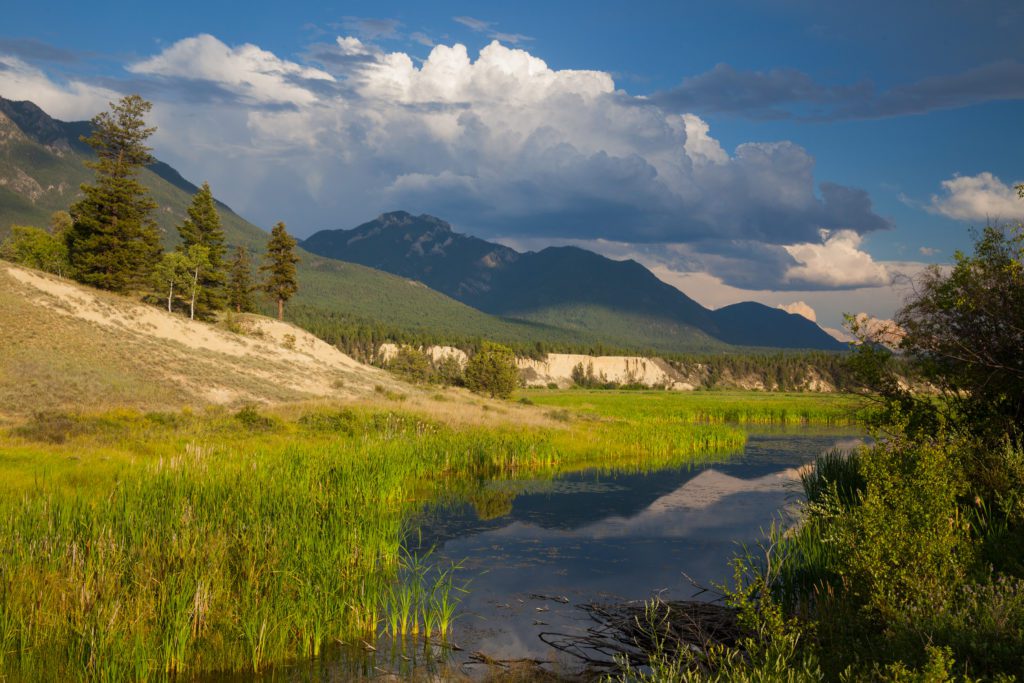
“The Columbia River Wetlands-Edgewater property has incredible diversity, ranging from wetlands to grasslands and open forest habitats. From the upper benches, the views across the Columbia Valley and up and down the Rocky Mountain Trench are stunning”
- Chris Bosman, Kootenay Conservation Land Manager
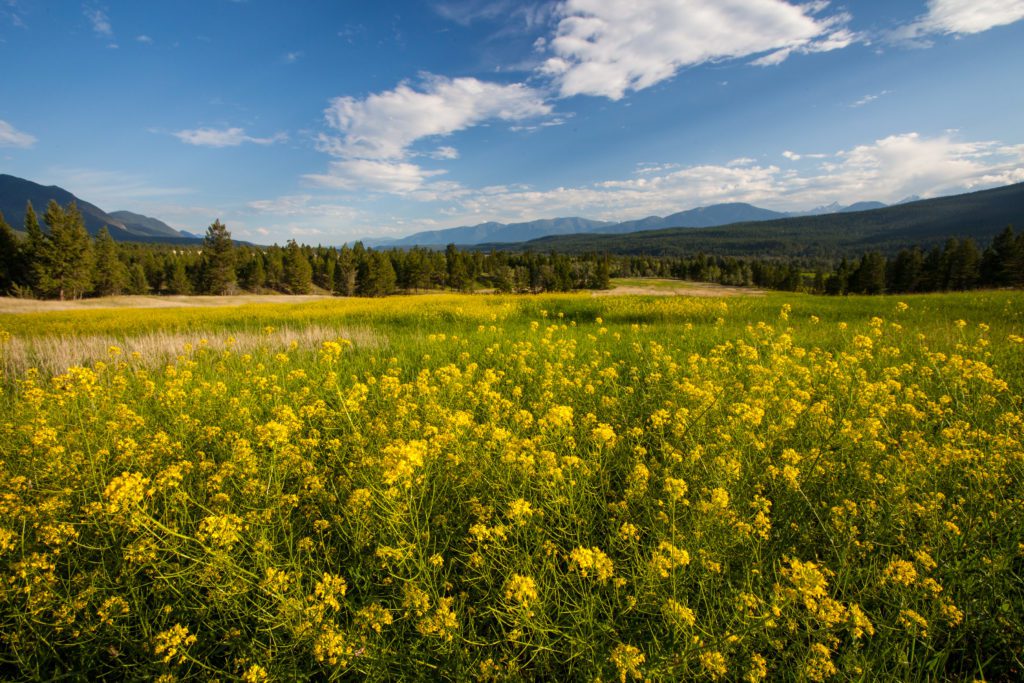
Facts
- With the first acquisition in 1980 and the second in 2019, The Nature Trust of BC has conserved 376 hectares of land in the Kootenays called Columbia River Edgewater. This property provides many benefits: conservation of riparian and wetland ecosystems, protection of an important bird migration corridor, and landscape connectivity with dry, open upland forest.
- Columbia River Edgewater has outstanding habitat for grizzly bears, American badgers and a variety of birds. It also provides winter range for mule deer, white-tailed deer and moose.
- This property is particularly beneficial to conservation because its wetland complex is continuous with wetlands in the Columbia Wetlands Wildlife Managed Area. This WMA is a Ramsar site designated as a Wetland of International Importance because of the significant migratory bird habitat. The WMA contains regionally unparalleled diversity of 16 habitats for over 200 species.
